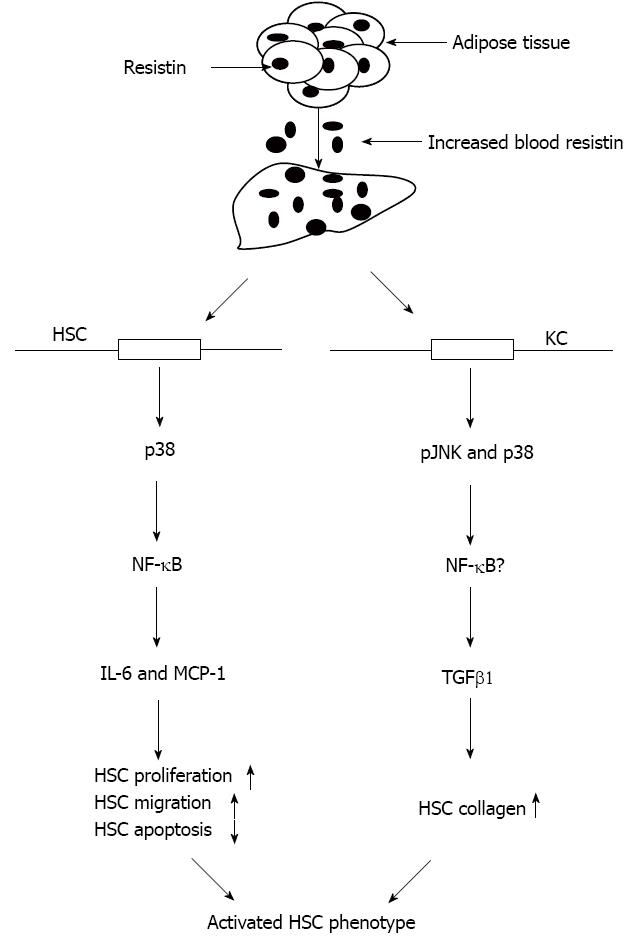Copyright
©2013 Baishideng Publishing Group Co.
World J Gastroenterol. Jul 28, 2013; 19(28): 4475-4485
Published online Jul 28, 2013. doi: 10.3748/wjg.v19.i28.4475
Published online Jul 28, 2013. doi: 10.3748/wjg.v19.i28.4475
Figure 6 Schematic diagram illustrating a possible mechanism by which resistin potentiates hepatic stellate cells profibrogenic phenotype.
Adipose tissue is a predominant source of resistin expression and secretion in rodents. Increased adipose resistin released into the bloodstream and liver stimulates HSCs to produce increased amounts of pro-inflammatory cytokines and chemokines (IL-6 and MCP-1), leading to enhanced HSC proliferation and migration, but attenuation of HSC apoptosis. In addition, resistin promotes KC TGFβ1 which subsequently activates HSC by up-regulation of collagen I. Therefore, resistin is considered one of the pro-fibrogenic adipocytokines. TGFβ1: Transforming growth factor; NF-κB: Nuclear factor κB; IL-6: Interleukin 6; MCP-1: Monocyte chemotactic protein-1; HSCs: Hepatic stellate cells.
- Citation: Dong ZX, Su L, Brymora J, Bird C, Xie Q, George J, Wang JH. Resistin mediates the hepatic stellate cell phenotype. World J Gastroenterol 2013; 19(28): 4475-4485
- URL: https://www.wjgnet.com/1007-9327/full/v19/i28/4475.htm
- DOI: https://dx.doi.org/10.3748/wjg.v19.i28.4475









